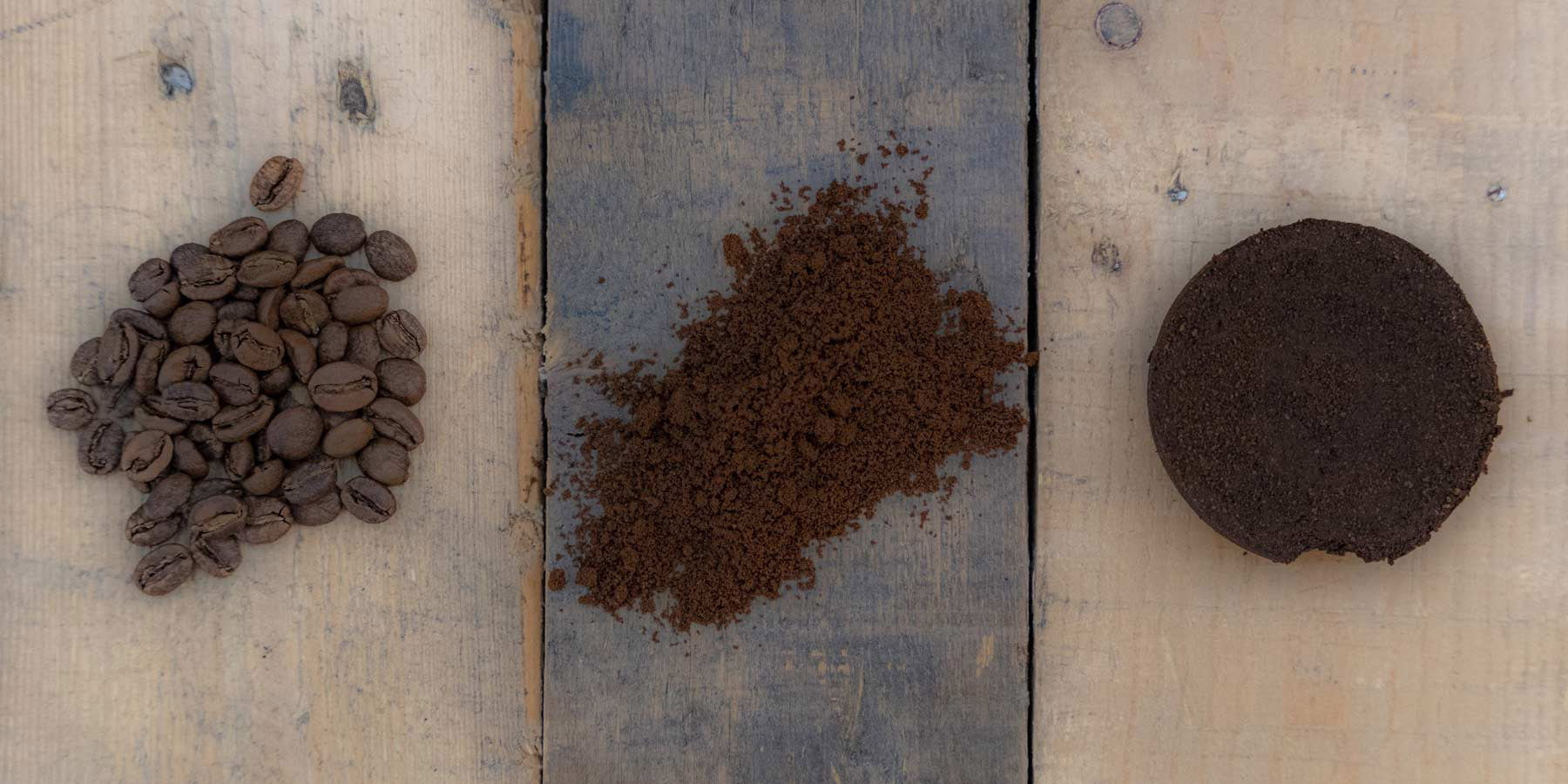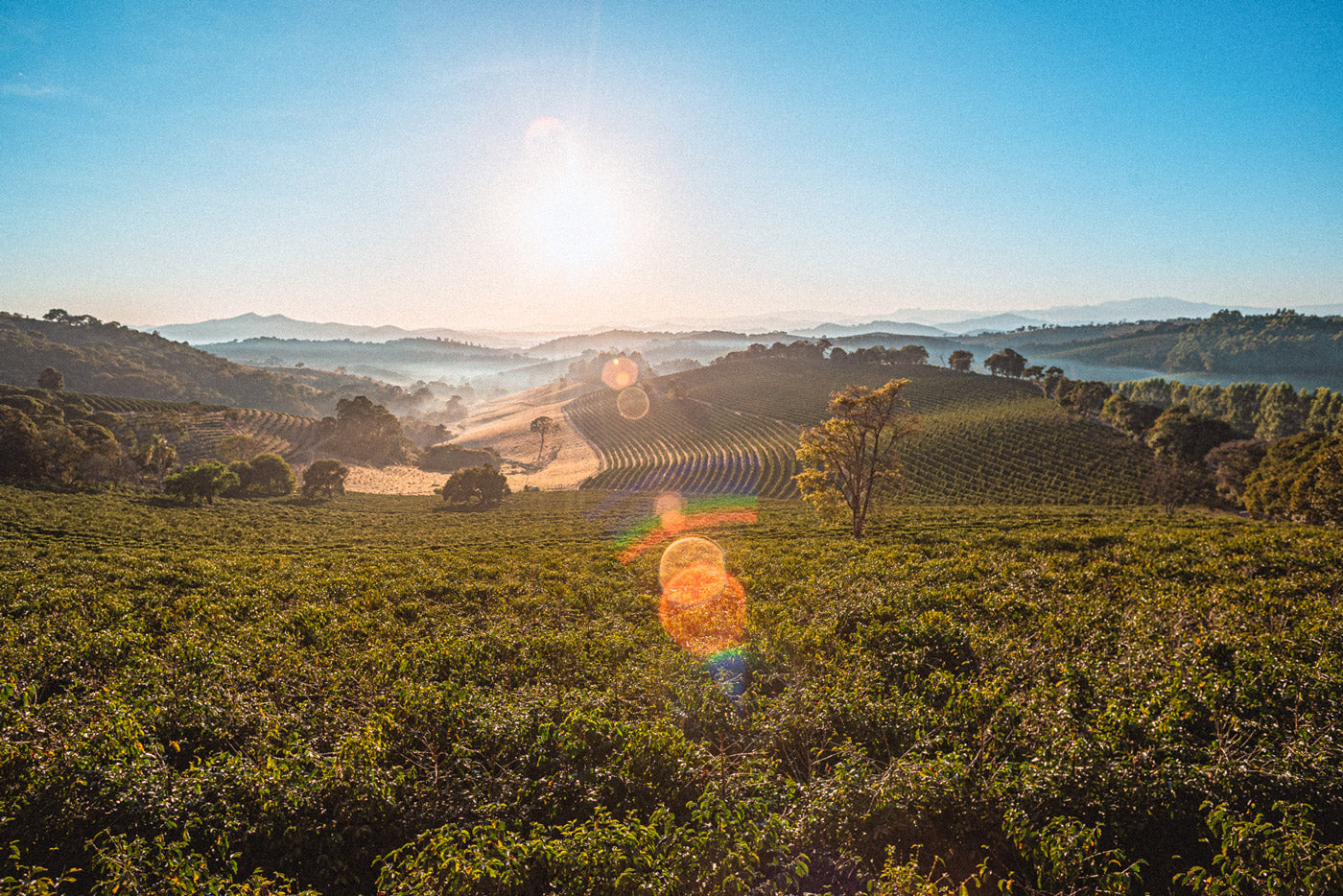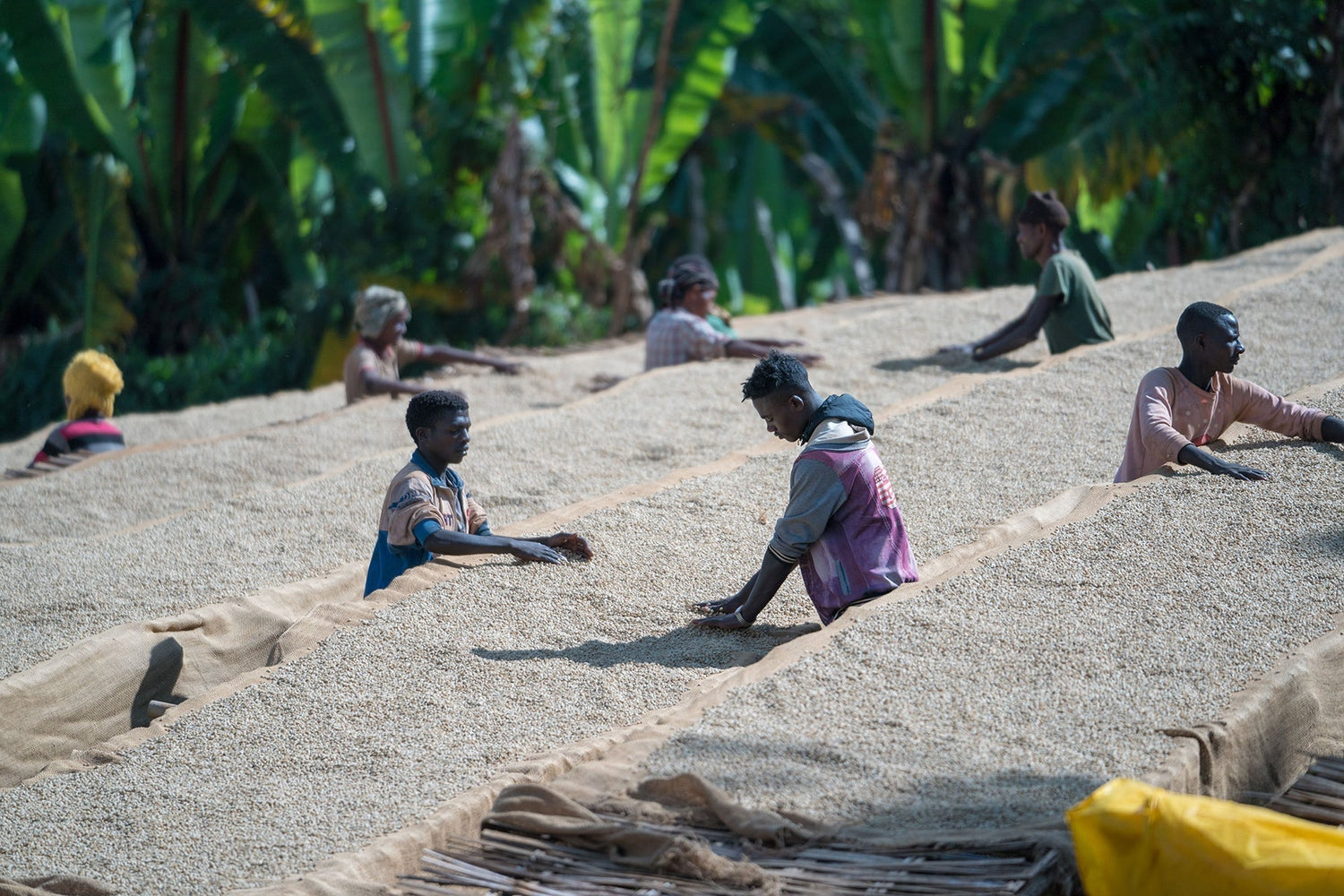Fine, very fine or medium fine? The optimal espresso grind has always been an interesting topic in the coffee world and will probably continue to be so in the future. We want to give you a little guide on what the optimal espresso grind is and how you can find it for you and your coffee grinder.

So what is the best espresso grind?
The optimal grind for your portafilter is the one that allows your espresso to run through optimally. In other words, neither under- nor over-extracted. The answer to this question could be easy if all coffee lovers in the world had the same coffee grinder - and the same coffee beans. But since one and the same coffee bean can vary from harvest to harvest, it may even be necessary to reset the grind. The short version is: Basically, if you're really freaky, you could reset your espresso grind with every new pack of coffee. But of course that doesn't have to be the case. Let's approach this mathematically.
Espresso grind size – the mathematics
If you put a whole coffee bean in water, the water only has a surface area of about 70 square millimeters (for a coffee bean that is 6 millimeters high and 4 millimeters wide). If you break the bean in two, the 70 square millimeters are added to the break points that are now accessible to the water. If you quarter the bean, even more surface area is added, and so on and so forth. In any case, that is the reason why we grind coffee before brewing. Because it is about the hot water hitting and penetrating as much of the coffee surface as possible. (A good ground bean has about 120 times the surface area of an unground bean.) Because that is the only way to achieve the exceptionally good cup profile. Another important factor is time. The less time the water has, the more surface area it needs. And so we come to the first conclusion: the espresso grind has to be very fine, because the water has little time.
Espresso grind – time and space
For an easier understanding, let’s compare a few grinding levels depending on the brewing time:
The equation is brewing time : grind size = good coffee
- Espresso / 25 – 30 seconds : very fine to fine
- Filter coffee / 150 seconds : medium coarse
- French Press /240 seconds : coarse
As you can see, the longer the hot water stays in contact with the coffee powder, the coarser you can grind your coffee. So much for the math. In practice, it looks different and easier.

Espresso grind – micrometer & grinding levels
Now we still have the challenge that not every grinder grinds the same. And also that not every bean reacts the same. We can ignore the latter for now. Fine is not always fine. For example, there are grinders with 20 grinding settings and others with 200. So what exactly does fine mean? I could start to get very technical now and give the grain size in microns, or micrometers, but who gets out a ruler or caliper to brew a coffee? Especially since you'll probably need a particle measuring device for that. As a guideline, however, you could say that something around 250 micrometers is good for the espresso grind. So a quarter of a millimeter. Unfortunately, we don't know what setting that is on your grinder. You are welcome to measure it, but you don't have to in order to find the perfect espresso grind.
Info: For comparison, the average grind of filter coffee is 500 to 700 microns , i.e. half to three-quarters of a millimetre.
Espresso grind size – the trial and error method
Let's assume that your grinder can grind everything from filter coffee to espresso. Then you have two ends of a scale, whatever the individual steps are called. Sometimes they are numbers, or clicks or levels, or on one side it says coarse and the other fine. What is clear is that one side is very coarse, the other very fine, and in the middle is medium. Since the espresso grind is on the fine side, you can choose the middle between "very fine", i.e. the end of the scale, and the middle of the scale as your starting point. Grinder your espresso and let it run through. If it goes too quickly, you can set it finer; if it goes too slowly, you can go coarser. You can also start at very fine, i.e. one end of the scale, and simply work your way up to coarser. Both work.

Espresso grind –
Feel and see
You can also see and feel the right grind for the portafilter. A little experience is not harmful here. You can get a feel for the optimal espresso grind by taking a close look at your espresso powder. The best way to do this is to do a trickle test on a white sheet of paper. Here you should pay more attention to the trickle behavior of the powder than to the appearance of the grains. The feel of the coffee grounds is also important. From a grain size of 0.3 to 0.4 millimeters, the coffee grounds begin to bind water vapor from the environment thanks to their hygroscopic properties. One indication of this is the beginning of clumping. Here the trickle test on the paper shows whether there are clumps or whether the grains are still lying alone. If there are many small clumps, you are right with your grind; if there are no clumps, you are too coarse; if there are only a few large clumps, you are too fine. When tested with your finger, espresso powder should feel like cocoa or cinnamon.
Espresso grind – the influence on the taste

When it comes to the taste and the fine notes in the cup profile, the degree of grinding plays a significant role. During preparation, just enough aromas should be released from the ground coffee. If too many aromas are released from the coffee, the end result will taste very strong and unbearably bitter. The coffee was ground too finely. If not enough aromas are released from the coffee, the coffee will taste watery and thin. The coffee was then ground too coarsely. For home use, it is therefore advisable to sit down and find the optimal grinding level with your current espresso beans. If you have that, then of course it can work with other beans too. Or you may have to adjust it a little.
Professional settings Espresso grind – check every day
The professional barista knows that the desired espresso lumps appear with different settings on the coffee grinder, depending on the fat content of the coffee and the humidity of the day. So what does the professional do? In the morning, before preparing an espresso, he checks whether his settings from the previous day are still correct. Slight adjustments up or down are the reason why the barista's espresso tastes so good. And they do so consistently, every day. You can of course do the same at home.
Espresso grind -
the right mill
Often, however, the problem is with the espresso grinder itself. Many coffee grinders that are sold as espresso grinders are not suitable for portafilter machines. Most very simple grinders either cannot grind finely enough, cannot be adjusted precisely enough, or give up the ghost after a short time. A suitable espresso grinder should therefore have a fine and precise grinding setting , be powerful enough, and have grinding discs with an espresso cut, such as the Fellow Ode coffee grinder . So it's worth spending a little more.

Espresso grind – conclusion
The perfect espresso grind is not difficult to find, you just need to take a little time and tinker with the settings on your grinder. You also need to experiment a bit. You should start somewhere between very fine and medium and then work your way up or down depending on the extraction. The same applies to fully automatic machines. Once you have found the grind, it won't suit every coffee and it won't last forever, but it certainly forms a good basis for making a few small adjustments every day, week or month so that you can enjoy the perfect espresso again and again.


